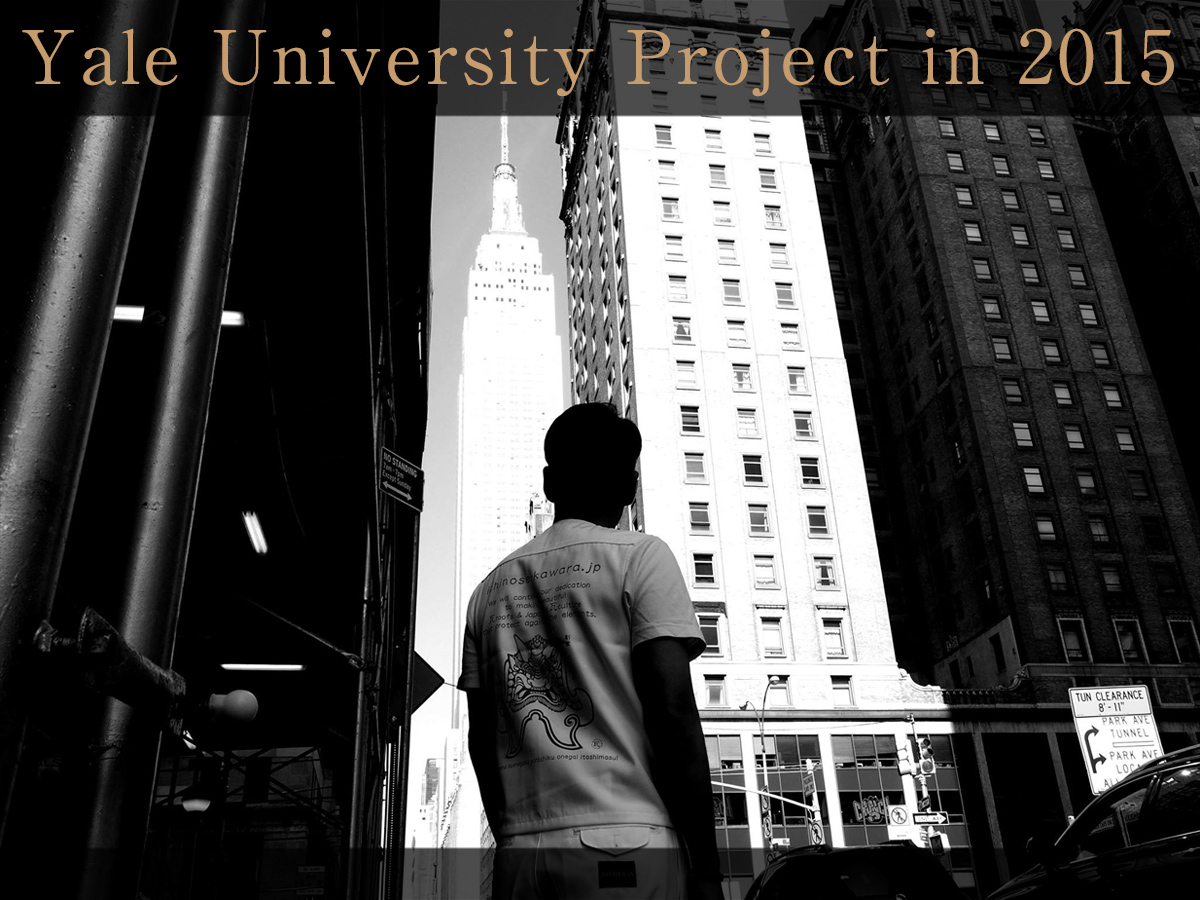
Yale University
Yale is a private university located in New Haven, Connecticut which was founded before the country United States, in 1701. It is the third-oldest institution of higher education in the United States and one of the eight Ivy League schools. Yale places top three in US NEWS RANKINGS every year competing with Harvard University and Princeton University, and its Law School is the toughest of all university surpassing Harvard University. The university has produced the nation's best and the brightest leaders such as five presidents of the United States including two Bush presidents, and George Nelson and Eero Saarinen in the field of architecture. The university’s motto is “Lux et Veritas”, “Light and truth” in Latin.
Yale University Project
Yale is no doubt one of the most prestigious universities in the world and they have an art gallery, Yale University Art Gallery, on the campus. Galleries in Japan are all relatively small but here it isn’t. This four-storied vast space is filled with works from all ages and cultures by world famous artists such as Pablo Picasso, Van Gogh, Salvador Dalí, Isamu Noguchi, Jakuchu Ito and Jano School.
The gallery was designed by Louis Kahn, the master of construction industry. The building is so fascinating it would’ve been a national facility if it was in Japan and there they decided to launch a project to build a Japanese building in a courtyard. The architect is Paul Discoe who trained in becoming a miyadaiku in Japan. He works to spread Zen and Japanese architecture in the United States, one of his works include the Japanese garden of Larry Ellison, Oracle. Paul enjoys wearing casual with his straw hat, flip-flops, flannel shirt and jeans – for over 10 years except for days with heavy snow falls.
The “Japanese Tea Gate Project” for a prestigious university by a prestigious architect. It was a miracle that our company was able to be involved at all to do the roofing works. But a huge pressure was on for us… The project included the exportation of kawara and there was a number of emails exchanged to deal with various troubles such as drawing changes and exportation delays but finally the departure date was set in mid-September.
But even more troubles were waiting for me as I landed. No Japanese speakers, curved walls when they were supposed to be straights, no sub-materials had arrived, fast-tracking completion requested to be ready for the completion ceremony, etc. Things weren’t looking up right from the beginning.
And to add insult to injury, I found out that kawara shipping was delayed by a week, the air of the field was slowly getting worse… Finally the kawara arrived which made us all happy but there was a work called “aiba” needed to be done on each kawara before they were able to be placed on the roof. This involved a long low-profile task and disappointed everyone else’s expectations (though I had explained about the work beforehand) which made the air even worse.
A few days had passed without the importance of “aiba” being understood, I finally started hearing complains from other staff as they thought I was unprofessional taking too long time for a preparation. As I could not take the pressure any longer I decided to change the initial plan to finish all the “aiba” work first and instead, started working on one side of a roof to show what the others wanted to see. The very next day Shawn, the project lead, gave me a surprised look by seeing the completed side of the roof. Yes, I managed to make him tell me “fantastic!!” and “beautiful!!”.
Finally I was able to share the importance of “aiba” and the staff started to listen to me.
Even since then I was able to get anything I needed quickly including the improvement of my work environment. More visitors day by day to see my work and in the end I was called an “Japanese Artist”, some people even asked for my autograph.
By then I was feeling good and started working on the most difficult part of this project, “a wall with beautiful curves”. Kawara tiles cannot be bent so to make them align the curves of the wall was challenging. It involved a lot of calculations for tens of kawara tiles but eventually, after working on it for several days, it completed. It was such a relieve.
For one whole month after the kawara tiles arrived I kept working without taking any breaks. A tent and rain wear on a rainy day, not even a proper lunch break to save time and have the roof completed 3 days before the completion ceremony as planned. It was pretty sad watching other staff who I became friends with leave as I was the last one working in the field. There were so many challenges I had to face but it meant a lot to me that the value of beauty and sense of existence of a Japanese kawara, how aesthetics of Japanese architecture is built upon precise calculation, and how Japanese people face their jobs were introduced and appreciated.
And the beauty of “Ibishigin” attracted many people. I prepared an original onigawara with a design of university emblem as a surprise gift upon completion. They loved its beautiful form very much which made me believe in the potential of kawara.
I might have insisted a little bit but everyone started calling “kawara” instead of “tiles” in the end.
“Kawara” is valued and recognized by one of the most prestigious universities in the world and I am confident to say that it has brought a new dimension to the “Japanese culture”. Japanese “Kawara” to the world – I will keep challenging with kawara through a multiple approach.
Yale University Project Gallery
Click to enlarge images.








































































































































































